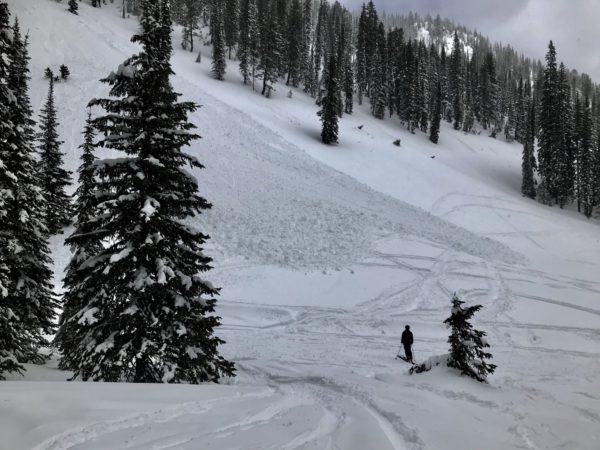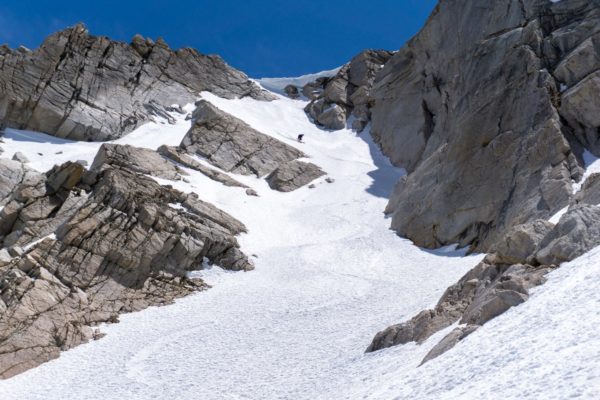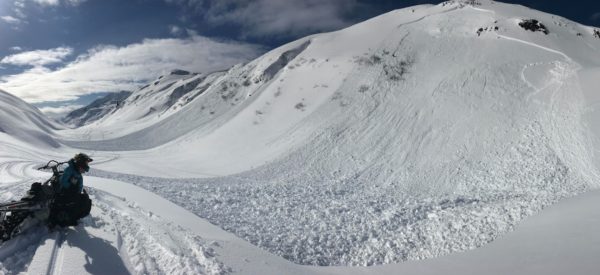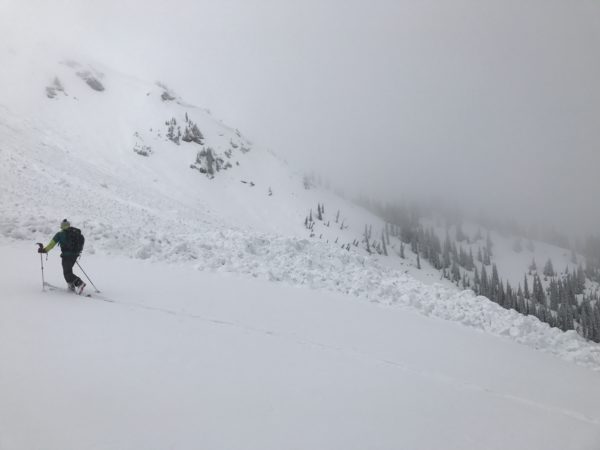Threatening avalanche terrain that looms above you.
When traveling through avalanche terrain, you need to manage the hazards posed by the terrain that you travel on AND the terrain above you. Even if the slope you are on is stable or low angle, a start zone above you can release naturally, from another group traveling above you, or you can trigger it remotely. Sometimes overhead hazards are obscured from view by clouds or terrain features.

This natural avalanche covered numerous tracks on the slope below it. Credit: Flathead Avalanche Center

Cornices (shown here) and glacial seracs are overhead hazards that can fall naturally and act as triggers for larger avalanches. Credit: Snowbrains.com

These avalanches were remotely triggered by snowmobilers riding in the flat valley bottom. Credit: Chugach National Forest Avalanche Information Center

Sometimes overhead hazards are obscured from view by clouds or terrain features. Thus it is important to familiarize yourself with terrain using maps, local knowledge, etc. Credit: Flathead Avalanche Center
